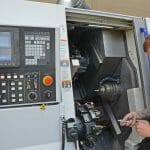Data is a critical asset for military organisations, but this data is only valuable if used effectively. With this in mind, Emma Cygan, design and development engineer at steering system supplier, Pailton Engineering, addresses the need for data-driven design in military vehicle engineering.
The military vehicle sector is rapidly adapting to changing security threats and new technologies. In fact, much of Britain’s Ministry of Defence (MoD) and the US Department of Defence (DoD) procurement activity now uses cloud services, software and technology products involved in the collection and processing of huge reams of data. However, the industry is still at the early stages of making full use of the wealth of information available to it.
Designing with data means that military vehicles are able to take on the rough terrain and turbulent conditions of the real world — with maximum survivability. But, where does this data come from?
Connected military vehicles are generating gigabytes of data from sensor-packed functions including on-board systems that monitor a vehicle’s oil, temperature and fuel consumption, as well as more general performance data, such as speed, distance travelled and location. This data can be used to track vehicles and personnel, and importantly, make intelligent decisions and inform the design of future vehicles.
By using data generated from real-life vehicles, design engineers can make more informed decisions on how to best manufacture a military vehicle. Instead, real-life vehicle data is used to design, manufacture and test military-grade steering systems against the specified load and frequency data of the real-life application. If the load data is unknown, theoretical calculations and simulation software can also outline loads.
It is not necessarily the static values of the load or frequency data that is of most concern in the design process, considering that most military vehicles are designed to go above and beyond the actual loads and frequencies they will face. Rather, it’s the dynamic nature of the vehicle’s activity — the varying loads, the changeable frequencies and irregular abusive loads that occur during the vehicles life that should be a fundamental consideration.
This use of real-life data takes this dynamism from the qualitative realm, to the quantitative realm, so engineers can use this data when developing a vehicles design.
Data-driven testing
Data-driven design enables data-driven testing. One of the most important parameters to test for a military vehicle and its parts is the maximum load. With this information you can observe how much force a part can endure, in both tensile and compression, before a failure occurs. Using different rigs to test a range of force applications, forces up to ±400kN can be applied both statically or dynamically.
Moreover, with enough data, you can compile a multitude of loads at their respective frequencies and cycles as part of a dynamic block testing program. This program effectively mirrors the real-life data that is gathered from the vehicle to accurately assess the true fatigue life of the part.
With a variety of loads and frequencies in place, engineers can measure the number of cycles that the parts can endure over time, performing 1,000,000 load cycles in only 1 week. That’s enough to replicate infinite life for a part on a vehicle, meaning lifecycle management decisions can be made in advance.
As connected military vehicles are generating more data than ever before, it makes sense that these vehicles be produced with meaningful design data at conception, to maximise safety, performance and efficiency.





